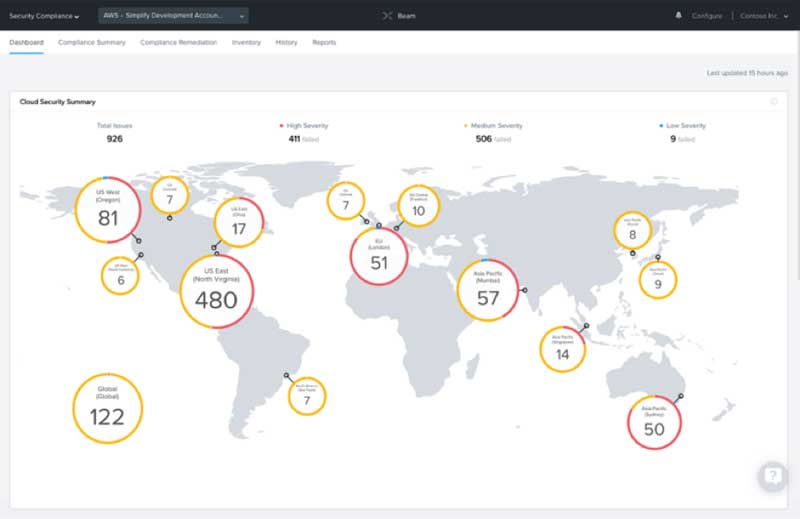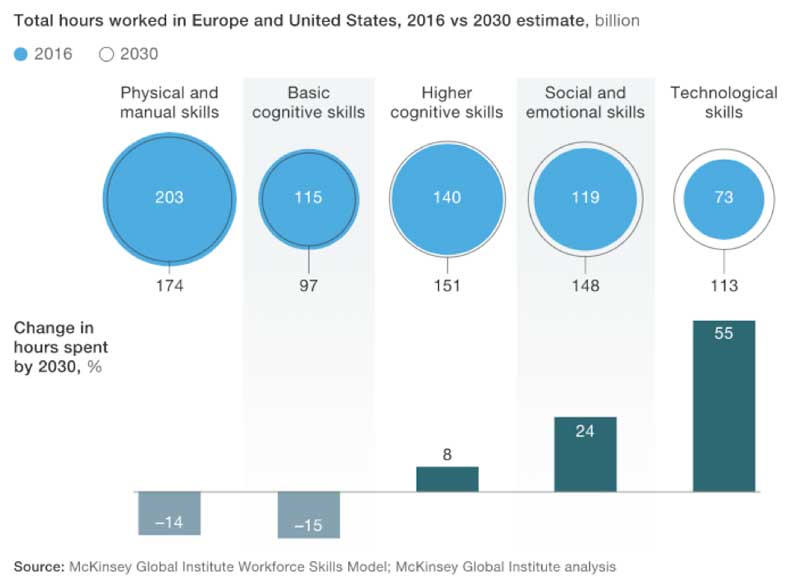Managed Service Providers (MSPs) have consistently proven themselves in helping businesses focus on their core competencies by managing non-mission-critical functions. This happens when non-core business functions are handed off to an MSP with well-defined SLAs and expectations. MSPs routinely handle IT processing and operations functions, hiring, and customer support. But the landscape is changing, and so are MSPs.
With the digitization of processes and functions, MSPs are moving into the next phase of this evolution and focusing their efforts to help businesses to make those leaps. Positive developments include more than just SLAs, such as incorporating business goals and bringing specialists on board to add organizational knowledge, enhancing organizational capabilities, and expediting transformation.
Here are various functional areas in which an MSP can become a valued business partner to the organization, given the right synergies exist.
Application and Data Security Services
With the constant threat of security breaches and social media data scandals, businesses are rightfully concerned with keeping their applications and data secure. Here is where a good MSP can guide and protect the enterprise from mistakes that could cost the business its livelihood.
Perimeter management of the network and vulnerability testing of software are some common services outsourced to an MSP. From white hat hacking of applications and systems for potential failure identification to managing changes in design to tighten security overall, a specialized Security MSP can help keep a business as safe as possible. MSPs have a vested interest in keeping up with the latest encryption technologies and eliminating issues with privacy and security – it’s only by proving their efficacy that they can keep existing clients and attract new ones.
This lets the business get on with serving its customers and allows the experts to handle the security. It is a field that is continuously changing with the bad guys getting smarter at a speed that is hard to keep up with and challenging to handle.
A cross-platform security suite implemented within the enterprise and monitored by an MSP is one of the best ways of securing organizational assets, whether on the public cloud or otherwise. A centrally administered, hybrid security solution gives the MSP as well as in-house IT admins complete visibility across all cloud data, applications, and infrastructure, and helps deal with security vulnerabilities in real-time.

Source: Nutanix Beam
Big Data Business Intelligence Services
Business data is a tremendous asset, but only if it is available, structured, maintained, and managed correctly. Enterprises are finding a wealth of information tucked away in their data – if at all, they get a chance to look at it.
First, the data needs to collected on systems that can handle the types of Big Data/BI queries and required models. This aggregation requires a breaking down of silos of data, structuring it to allow analysis, and storing it effectively.
Then the different data customers — potential users of the information — need timely access to the data they need to make the decisions, both routine and one-time. The right data presentation layers are crucial in making this happen. Not everyone wants a dashboard – some need a simple report, others need detailed analysis, yet others want to know about outliers and anomalies.
A solid Big Data/BI MSP can help do all these things and help the enterprise make drastic leaps in their ability to use this new information. Big Data isn’t slowing down anytime soon; instead, businesses are continually trying to catch up. Even as capabilities continue to grow, gaps grow wider. This is another area where business goals and not just SLAs should be part of contract discussions.
Digitization Services
Digitizing paper documents has become necessary for enterprises in order to simplify processes, enhance workflows, increase operational efficiency, and improve customer engagement and service. If an enterprise is not familiar with the technologies involved, documentation can turn into a cost center very quickly.
Digitization of all documents, particularly human resources, medical, legal, and financial records, has become one of the most cost-optimizing efforts an enterprise can undertake. It will "tame the paper tiger" with the potential to free up numerous staff-hours spent managing, storing, retrieving, and cataloging. It can cut back on required office space and ease compliance headaches, streamline operations, and cut costs.
Organizations have the option of sending documents to an MSP Instead of shipping them to a repository. MSPs will perform the necessary Digital Business Infrastructure Operations (DBIO), such as digitizing, cataloging, tagging (many MSPs have domain expertise in taxonomy), uploading, saving, and shredding. MSPs can also continuously optimize the infrastructure required to reach the company’s digital business goals, around which contracts are often designed.
IoT Development Services
The biggest reason as much as 76% or IoT projects fail is due to the lack of engagement and interdisciplinary collaboration across the enterprise.
A project may start in one department, but there is no collaboration across the enterprise to maximize the value. Once all SBUs are in the same room, talking to each other, it emerges that most business IoT projects have value to several areas. This form of teamwork can help share the expenses and optimize the cost of these projects.
Bringing in an MSP to manage IoT projects removes many of the barriers that could hold up an internal project. With executive management in support, but an external expert in control, various groups can come to the table more openly and cooperatively. This free-flowing communication alone may be worth the effort. When used in combination with additional features, everything can move at a smoother, faster pace. This includes expertise in sensors, edge, fog and mist, cloud architecture, data extrapolation, normalization, and presentation.
Datacenter architecture and edge computing are evolving to accommodate the huge volumes of Big Data that IoT applications in the enterprise are generating. MSPs will have the right tools to integrate and manage scattered computing and storage in data centers across premises, edge, and public cloud locations. Further, software from Nutanix allows one-click deployment of IoT and AI-based applications in the cloud, exactly the same way they're deployed on the edge at a physical location, with the same APIs and services for development and production environments. This ensures the data is used in the right workflows, and aids in decision-making as well as process automations.

Source: Nutanix
Artificial Intelligence and Machine Learning Services
Not an easy tech to master, AI, and Machine Learning (ML) take hard science, firm focus, and a soft hand to drive business. Research from McKinsey shows that as AI advances, about half the activities done by workers today could be automated right away!

Source: McKinsey
Over-tooling of rules and guidelines is common for early users and can have unintended consequences. Finding skilled staff can be akin to finding a unicorn — hard to do and expensive to get. McKinsey also estimates that fewer than 10,000 people have the skills to solve complex AI problems.
Adoption is difficult, and while many enterprises would like to use them, the gap is widening at an alarming speed.
Bringing on a qualified AI/ML MSP would bring the skills, technology, and business acumen into an organization quickly, allowing significant gains in a much shorter time. MSPs can help the organization build an efficient, agile, AI-ready infrastructure that is quick to start, simple to scale, and delivers integrated data services that software developers and data scientists need. Projects roll out faster with simplified development and linear scaling, without the need for re-architecting.
The true value to the business may not yet be fully known, but without assistance, most will not find it in the near future.
Customer Service Automation Services
With the automation of customer support functions, fewer CSRs are required, and MSPs are moving forward with intelligent chatbots. These can range from the simple that require minimal coding to handle pre-determined answers to quite advanced, that handle numerous tasks and interact directly with people (who may not realize they are working with a piece of software), utilizing the latest in AI and ML.
Getting to this point, however, is the tricky bit. There are now MSPs, with domain expertise in customer service and technical expertise in AI/ML, who specialize in chatbot development and deployment.
MSPs often use their chatbot applications and can be an engaged vendor for both usage and maintenance, depending on how the contract is defined. They can implement and maintain them for a company, or help it get started, nurture the program into a core process, and then allow direct management to fall back into the company once internal skills are in place.
Infrastructure and Cloud Transformation Services
Converged and hyperconverged infrastructure, and hybrid and multi-cloud environments abound in enterprises of every shape and size today. Add to that the ongoing demands to meet ever-increasing requirements for storage and compute power. Wrestling these into a cohesive, compatible, cost-effective team takes more than a few skills and a lot of time.
Building these systems into a complementary whole requires deep analysis, understanding of the whole enterprise and the future goals and needs, along with knowledge of the current technology landscape and available products and services. Getting some help here can move this forward, faster.
MSPs of infrastructure and cloud transformation services can be integral partners who ensure operational stability and advancement towards the goals of the enterprise. The right MSP can work to streamline and upgrade all systems into alignment with the overall enterprise technology plan. They can eliminate guesswork and remove constraints created by conventional or legacy IT infrastructure. Benefits include:
Servers, storage, and networking virtualized in a single, scalable architecture
A single storage pool with data locality, reduction, and protection
Full-stack automation and simplified management from a single console
“Managed” Digital Transformation
Service providers play an important role in delivering technical expertise and IT services in a dynamic world in alignment with business needs, goals, and current activities. CIOs must ensure they bring on MSPs who can create cost-effective services that are differentiated from and beyond the scope of those available on the public cloud.
MSPs face significant infrastructure challenges such as difficulty onboarding customers and time taken to identify and remove silos from the existing infrastructure. However, the right partnerships, when scoped and executed properly, yield major savings across the board.
Featured Image: Pexels
Dipti Parmar is a contributing writer. She has written for CIO.com, Entrepreneur, CMO.com and Inc. magazine. Follow her on Twitter @dipTparmar.
© 2020 Nutanix, Inc. All rights reserved. For additional legal information, please go here.


